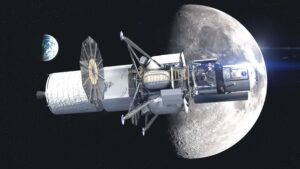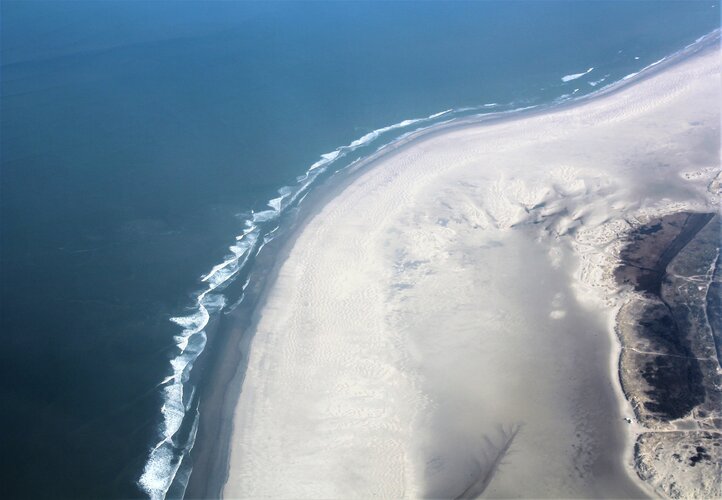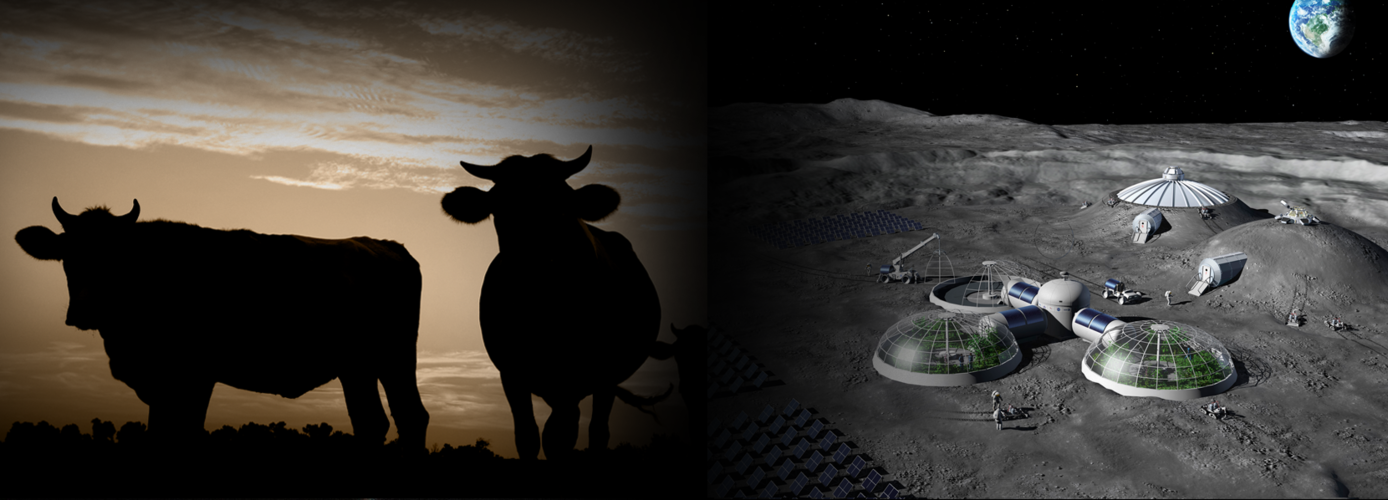Scientists find Mercury has magnetic storms
Friday, 01 April 2022 01:32 An international team of scientists has proved that Mercury, our solar system's smallest planet, has geomagnetic storms similar to those on Earth.
The research by scientists in the United States, Canada and China includes work by Hui Zhang, a space physics professor at the University of Alaska Fairbanks Geophysical Institute.
Their finding, a first, answers the question of whether ot
An international team of scientists has proved that Mercury, our solar system's smallest planet, has geomagnetic storms similar to those on Earth.
The research by scientists in the United States, Canada and China includes work by Hui Zhang, a space physics professor at the University of Alaska Fairbanks Geophysical Institute.
Their finding, a first, answers the question of whether ot Green Bank hosts new telescope for CHIME
Friday, 01 April 2022 01:32 In the quest to identify the origins of one of astronomy's biggest mysteries - fast radio bursts (FRBs) - Canada's world-renowned telescope, the Canadian Hydrogen Intensity Mapping Experiment (CHIME), is getting backup.
Supported by approximately $10 million in grants from the Gordon and Betty Moore Foundation, the CHIME/FRB Outriggers project has now secured funding to complete the constr
In the quest to identify the origins of one of astronomy's biggest mysteries - fast radio bursts (FRBs) - Canada's world-renowned telescope, the Canadian Hydrogen Intensity Mapping Experiment (CHIME), is getting backup.
Supported by approximately $10 million in grants from the Gordon and Betty Moore Foundation, the CHIME/FRB Outriggers project has now secured funding to complete the constr SES partners with NorthStar to tackle space sustainability challenges
Friday, 01 April 2022 01:32 A partnership to enhance Space Situational Awareness (SSA) and ensure a sustainable use of space has been formed between SES, the world's leading satellite-based content connectivity solutions provider, and NorthStar Earth and Space (NorthStar), the first commercial service to monitor space from space, both companies announced today.
Together with NorthStar, the teams will be working to la
A partnership to enhance Space Situational Awareness (SSA) and ensure a sustainable use of space has been formed between SES, the world's leading satellite-based content connectivity solutions provider, and NorthStar Earth and Space (NorthStar), the first commercial service to monitor space from space, both companies announced today.
Together with NorthStar, the teams will be working to la ATLANT 3D Nanosystems developing a space-certified Nanofabricator 0G
Friday, 01 April 2022 01:32 ATLANT 3D Nanosystems announces today the collaboration with ESA BIC to further advance the development of ATLANT 3D Nanofabricator 0G systems, the first-ever zero gravity R and D system that allows selective area direct write atomic layer precision.
ATLANT 3D will develop a space-certified Nanofabricator 0G with the goal of going to the International Space Station (ISS) in future missions
ATLANT 3D Nanosystems announces today the collaboration with ESA BIC to further advance the development of ATLANT 3D Nanofabricator 0G systems, the first-ever zero gravity R and D system that allows selective area direct write atomic layer precision.
ATLANT 3D will develop a space-certified Nanofabricator 0G with the goal of going to the International Space Station (ISS) in future missions AstroAccess announces second Zero-G parabolic flight for 2022
Friday, 01 April 2022 01:32 AstroAccess, an organization dedicated to promoting disability inclusion in space exploration alongside Space Frontier Foundation, an organization dedicated to the diversification and democratization of space, announced today that they will be flying a second cohort of disabled Ambassadors on a Zero Gravity Corporation flight later this year.
During the parabolic flight, the Ambassadors ex
AstroAccess, an organization dedicated to promoting disability inclusion in space exploration alongside Space Frontier Foundation, an organization dedicated to the diversification and democratization of space, announced today that they will be flying a second cohort of disabled Ambassadors on a Zero Gravity Corporation flight later this year.
During the parabolic flight, the Ambassadors ex Study reveals lunar regolith evolution process on Chang'e-4 landing area
Thursday, 31 March 2022 17:04
Blue Origin launches its fourth crew to final frontier
Thursday, 31 March 2022 15:32
Jeff Bezos' Blue Origin successfully carried out its fourth crewed spaceflight Thursday, a ten-minute joyride beyond the planet's atmosphere and back again.
The New Shepard suborbital rocket blasted off from the company's Launch Site One base in west Texas at 8:58 am local time (1358 GMT) with six crew members.
The crew included Gary Lai, chief architect of the New Shepard program, plus five paying customers—though the ticket price hasn't been disclosed.
"I felt my skin pulling taut," Lai said, of the rocket ride.
Lai's inclusion came after comedian Pete Davidson, the boyfriend of reality star Kim Kardashian, canceled his participation without disclosing a reason.
Blue Origin flies six on first New Shepard suborbital flight of 2022
Thursday, 31 March 2022 13:32
Blue Origin launched its New Shepard suborbital vehicle on its first flight of the year March 31, carrying six people on a brief trip to space and back.
The post Blue Origin flies six on first New Shepard suborbital flight of 2022 appeared first on SpaceNews.
Starlink eyes Southeast Asia foothold with the Philippines
Thursday, 31 March 2022 12:45
The Philippines is set to become the first country in Southeast Asia to access SpaceX’s Starlink broadband services, its government announced March 31.
The post Starlink eyes Southeast Asia foothold with the Philippines appeared first on SpaceNews.
Slingshot wins $25 million Space Force contract to develop digital twin of the space environment
Thursday, 31 March 2022 12:00
Slingshot Aerospace won a $25.2 million Space Force contract to develop a virtual replica of the space environment
The post Slingshot wins $25 million Space Force contract to develop digital twin of the space environment appeared first on SpaceNews.
Chinese spacecraft reenters atmosphere ahead of new space station missions
Thursday, 31 March 2022 11:32
China deorbited the Tianzhou-2 cargo spacecraft Thursday after testing on-orbit docking, refueling and module transposition for the Chinese space station.
The post Chinese spacecraft reenters atmosphere ahead of new space station missions appeared first on SpaceNews.
SES to work with NorthStar on space situational awareness
Thursday, 31 March 2022 10:15
Satellite operator SES announced March 31 it is working with Canadian startup NorthStar Earth & Space on developing space situational awareness (SSA) data products to support its fleet of communications satellites.
The post SES to work with NorthStar on space situational awareness appeared first on SpaceNews.
Northrop Grumman weighing options for new Artemis lunar lander competition
Thursday, 31 March 2022 08:01
Northrop Grumman says it’s still considering whether to rejoin a Blue Origin-led team for a second Artemis lunar lander competition or to go on its own.
The post Northrop Grumman weighing options for new Artemis lunar lander competition appeared first on SpaceNews.
Harmony in the Wadden
Thursday, 31 March 2022 06:30
An important milestone in the development of ESA’s tenth Earth Explorer satellite mission, Harmony, has been reached thanks to two aircraft flying in tight formation over the Dutch Wadden Islands collecting key data on sea state and currents. The main purpose of this tricky airborne experiment is to mimic the geometry at which the Harmony satellites will measure various aspects of ocean dynamics to understand how air and the ocean surface interact, which, in turn, will improve weather prediction and climate models.
On the road to cultured meat for astronauts (and Earthlings)
Thursday, 31 March 2022 06:14
Cultured meat could be a game changer for the environment, food security, human health and animal welfare. But some challenges prevent it from reaching its full potential. Now ESA is supporting researchers to explore the possibility of growing cultured meat to feed astronauts. Overcoming the challenges of growing meat in space could also help us find solutions to produce it sustainably and effectively on Earth.

